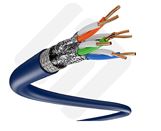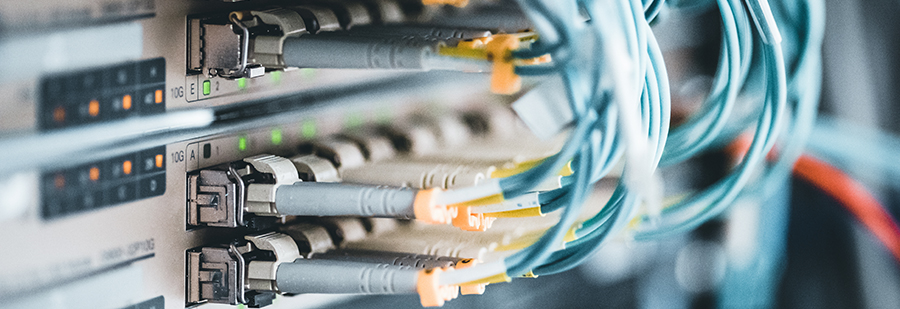Network CAble Installation in greeensboro, NC (and beyond)
We install both copper wiring (cat5 & Cat6) and fiber optic cabling across the Piedmont Triad

JSI Datacom -Greensboro North Carolina’s leader in copper wiring
& Fiber Optic Cabling services for both data and VOIce (voip Phone)
Network cabling services refer to the installation, maintenance, and repair of the various types of cables used to connect devices within a network. These cables include both copper and fiber optic cables. Whether for your office or home office, we do provide cabling for VoiP phones, other phone systems, desktop support or WiFi. JSI has you covered. Contact Us Today!
JSI Datacom in Greensboro, NC has over 20 years of experience in the Triad network systems industry. We have an experienced team of consultants and installers with expertise in providing professional network cabling services for businesses of all sizes.
Our Greensboro (Triad) based team of experienced technicians is trained to work with the latest technologies and industry standards to ensure that your business stays connected and running smoothly. We pride ourselves on our attention to detail and commitment to customer satisfaction, and we work closely with our clients to understand their specific needs and provide customized solutions.
 Copper Cable
Copper Cable
Copper cables, also known as twisted-pair cables, are the most common type of network cable systems.
They are made of copper wire and are used to transmit data using electrical signals. They are commonly used in Ethernet networks and are available in different grades, such as Cat5, Cat6, and Cat7. Copper cables are relatively inexpensive and easy to install, but they are also prone to interference and have a limited bandwidth.
 Fiber Optic Cabling
Fiber Optic Cabling
Fiber optic cables, on the other hand, are made of glass or plastic fibers and use light to transmit data and create high speed systems.
They are much faster than copper cables and can transmit data over longer distances without any loss of signal quality. They are also more resistant to interference, making them ideal for use in high-speed networks and in areas with a lot of electromagnetic interference. However, fiber optic cables are more expensive and difficult to install than copper cables.
When installing a network, it is important to choose the right type of cable for the application. Copper cables are suitable for small networks and networks with moderate data transfer requirements, while fiber optic cables are better suited for high-speed, high-bandwidth networks. JSI Datacom is a leading provider of network cabling installation in Greensboro and throughout the Piedmont Triad. We do it all, Voip phones, data, WiFi signal and many more services, all across the Triad.

A cabling backbone is a wiring infrastructure that interconnects all the equipment in a network and provides the primary pathway for data transmission services. A backbone cabling can be copper or fiber optic, the type of cabling used for the backbone will depend on the type of network and the data transfer requirements. Copper backbone cables are less expensive and easier to install than fiber optic cables, but they have lower bandwidth capabilities. Fiber optic cables are more expensive and difficult to install but provide much higher bandwidth and better resistance to interference.
A professional network cabling services provider will help you determine the best type of cable for your network and will handle the installation, maintenance, and repair of your network cables. This ensures that your network systems are running smoothly and that you are getting the most out of your investment.
Contact us today to schedule a consultation with our Triad baesd team and learn more about how we can help your business stay connected. We’re located in downtown Greensboro.

Common Questions for Network Cabling Installation
Data wiring is the backbone of IT Network Systems.for data & Phones
It is used to transfer data from one device to another within a network, including computers, servers, routers, and switches. As a result, data cabling is an essential component of any modern business. Here are some frequently asked questions about network cabling.
-
What is data cabling?
Data cabling is a physical infrastructure that involves wiring devices within a network. It consists of a network of wiring, connectors, and switches that facilitate data transfer between devices.
-
What are the different types of data cabling Network Systems?
There are several types of data wiring, including coaxial cables, twisted-pair cables, and fiber optic cables. Coaxial cables are used for high-frequency signals, twisted-pair cables are commonly used in Ethernet cable, and fiber optic cables are used for long-distance data transfers. Cat5, Cat5e, Cat6, and Cat6a are different categories of twisted pair Ethernet cable, which are used to connect computers, servers, and other networking equipment to each other and to the internet. Here’s how they differ:
- Cat5: This is an older type of cabling that supports speeds of up to 100 Mbps (megabits per second) and a frequency range of up to 100 MHz (megahertz). It has four pairs of copper wires and is suitable for basic networking needs.
- Cat5e: This is an improved version of Cat5 that supports speeds of up to 1 Gbps (gigabits per second) and a frequency range of up to 100 MHz. It also has four pairs of copper wires, but it has better insulation and a tighter twist ratio, which reduces crosstalk and interference.
- Cat6: This is a higher-performance cabling that supports speeds of up to 10 Gbps and a frequency range of up to 250 MHz. It has four pairs of copper wires, just like Cat5 and Cat5e, but it has even better insulation and a tighter twist ratio, which further reduces crosstalk and interference.
- Cat6a: This is an even higher-performance cabling that supports speeds of up to 10 Gbps and a frequency range of up to 500 MHz. It also has four pairs of copper wires, but each pair has a shield to further reduce crosstalk and interference.
- Fiber optic: The world of telecommunications is rapidly transitioning from copper wire networks to fiber optic cable installation services. Optical fiber is a very thin strand of pure glass which acts as a waveguide for light over long distances. It uses a principle known as total internal reflection. Fiber optic cable is actually composed of two layers of glass: The core, which carries the actual light signal, and the cladding, which is a layer of glass surrounding the core. The cladding has a lower refractive index than the core. This causes Total Internal Reflection within the core. Most fibers operate in duplex pairs: one fiber is used to transmit and the other is used to receive. But it is possible to send both signals over a single strand. There are two main types of fiber optic cables: Single Mode Fiber (SMF) and Multi-Mode Fiber (MMF). The difference is basically in the size of the core. MMF has a much wider core, allowing multiple modes (or “rays”) of light to propagate. SMF has a very narrow core which allows only a single mode of light to propagate. Each type of fiber has different properties with its own advantages and disadvantages.

-
Why is data cabling important?
Data cabling is important because it allows network systems to connect their devices and share information, which is essential for collaboration and productivity. Without data cabling, communication within a network would be impossible.
-
How do I know if I need data cabling?
If your business relies on computers, servers, or other network systems, you likely need data cabling. The amount of data you transfer, the number of devices you have, and the distance between those devices are all factors to consider when determining whether you need data cabling.
-
Can I install data cabling myself?
While it is possible to install data cabling yourself, it is not recommended. Installing data cabling systems require specialized knowledge and equipment, and any mistakes can result in costly downtime and lost productivity. It is best to hire a professional data cabling installer to ensure the job is done correctly.
-
How much does data cabling cost?
The cost of data cabling varies depending on the size and complexity of the network, the type of cabling used, and the distance between devices. It is best to get a quote from a professional data cabling installer to determine the cost for your specific needs. Costs may include labor, cost of cable, switches, patch panels, network jacks, etc.
-
How do I maintain my data cabling?
Regular maintenance is important to ensure that your data wiring is functioning properly. This includes checking for damage to cables or connectors, testing the speed and reliability of the network, and keeping the cabling clean and free of debris.
-
How do I troubleshoot data cabling issues?
If you are experiencing issues with your data cabling, the first step is to check for physical damage to cables or connectors. You should also check the network settings on your devices to ensure they are properly configured. If the issue persists, you may need to call a professional data cabling installer to diagnose and fix the problem.
-
How can I upgrade my existing data wiring?
If you need to upgrade your existing data cabling, you will need to determine the scope of the project and what type of cabling is required. This may include replacing old cables, upgrading to faster cabling, or expanding the network to accommodate new devices. It is best to work with a professional data cabling installer to ensure that the upgrade is done correctly.
In conclusion, data cabling is an essential component of any modern business, and it is important to ensure that it is functioning properly. Whether you are installing new wiring or upgrading your existing infrastructure, working with a professional data cabling installer can help you ensure that your network is reliable and efficient.
JSI Datacom is a leading installation provider for IT wiring in Greensboro, High Point and Winston Salem, North Carolina.
